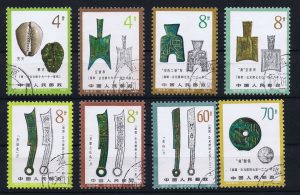 American companies investing into Asia has long been a subject. But now, at least in China, US firms seem to be zooming in on the food market specifically. KKR – a global, alternative investment firm – over the last few years has started putting its money into “everything from chicken producers to dairy farms.” The company – which speaks of its “industrialist vision” is seeing China’s food industry as a great opportunity. This is because – in the words of the firm’s global head of capital and asset management, Scott Nuttall, it is “seeing opportunities in private equity that really don’t show up in the public markets.” The firm is also aware of the entire Asian region’s new focus on environmental safety.
American companies investing into Asia has long been a subject. But now, at least in China, US firms seem to be zooming in on the food market specifically. KKR – a global, alternative investment firm – over the last few years has started putting its money into “everything from chicken producers to dairy farms.” The company – which speaks of its “industrialist vision” is seeing China’s food industry as a great opportunity. This is because – in the words of the firm’s global head of capital and asset management, Scott Nuttall, it is “seeing opportunities in private equity that really don’t show up in the public markets.” The firm is also aware of the entire Asian region’s new focus on environmental safety.
But there is somewhat of a challenge with making investments in the food industry in Asia, specifically China since the Chinese have so many people to feed. In a recent article in Business Insider by Rachel Butt, it was noted that: “the food industry there has to feed more than 1.4 billion people. The air pollution problem is so intense that officials have had to put caps on energy use.” So perhaps the food industry isn’t the best bet for US firms to make their investments.
China is considered a good, steady investment hub since it is believed that its economy is crucial to the overall emerging-market performance. In other words, given its $11 trillion GDP it is approximately the same size “to the next 1- largest emerging markets combined.” According to global CIO at UBS Wealth Management, Mark Haefele what this means is that even though its “growth trajectory has slowed over the past year, the deceleration has not been abrupt. The 6.7 percent GDP expansion in the second quarter provided additional evidence that government stimulus is stabilizing activity. And rising consumer spending is partly offsetting weakness in the ‘old economy’ industrial sector.”
Overall since China’s economy encountered a year-on-year growth of 6.7 percent in the second quarter (which was slightly higher than market expectations), this is indicative of an attractive investment location.